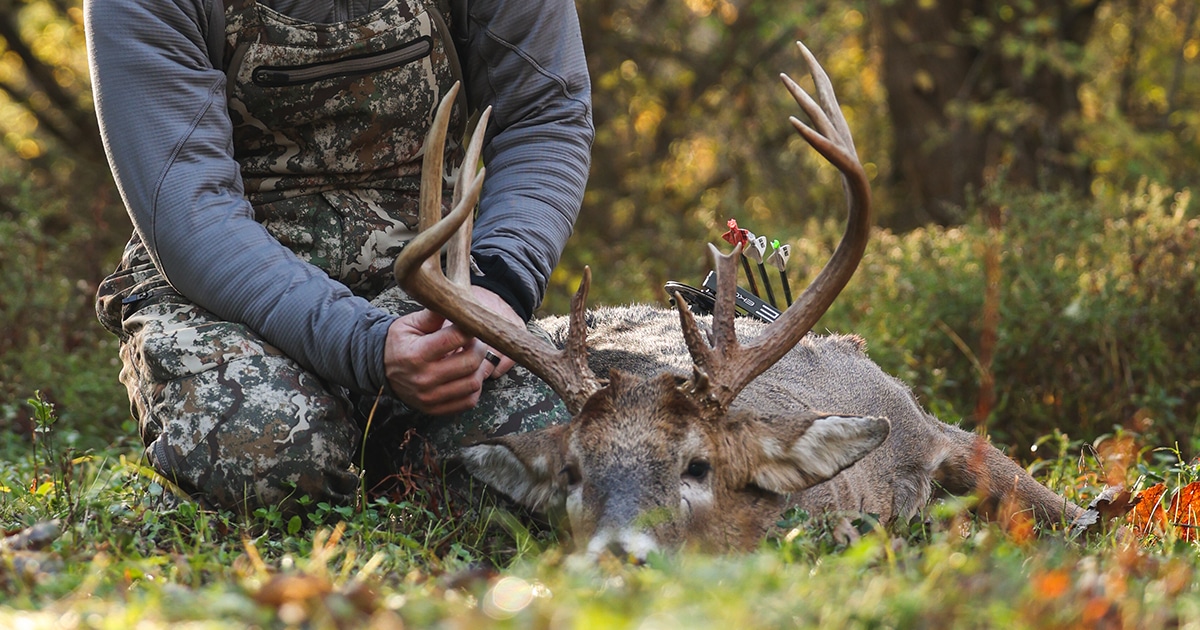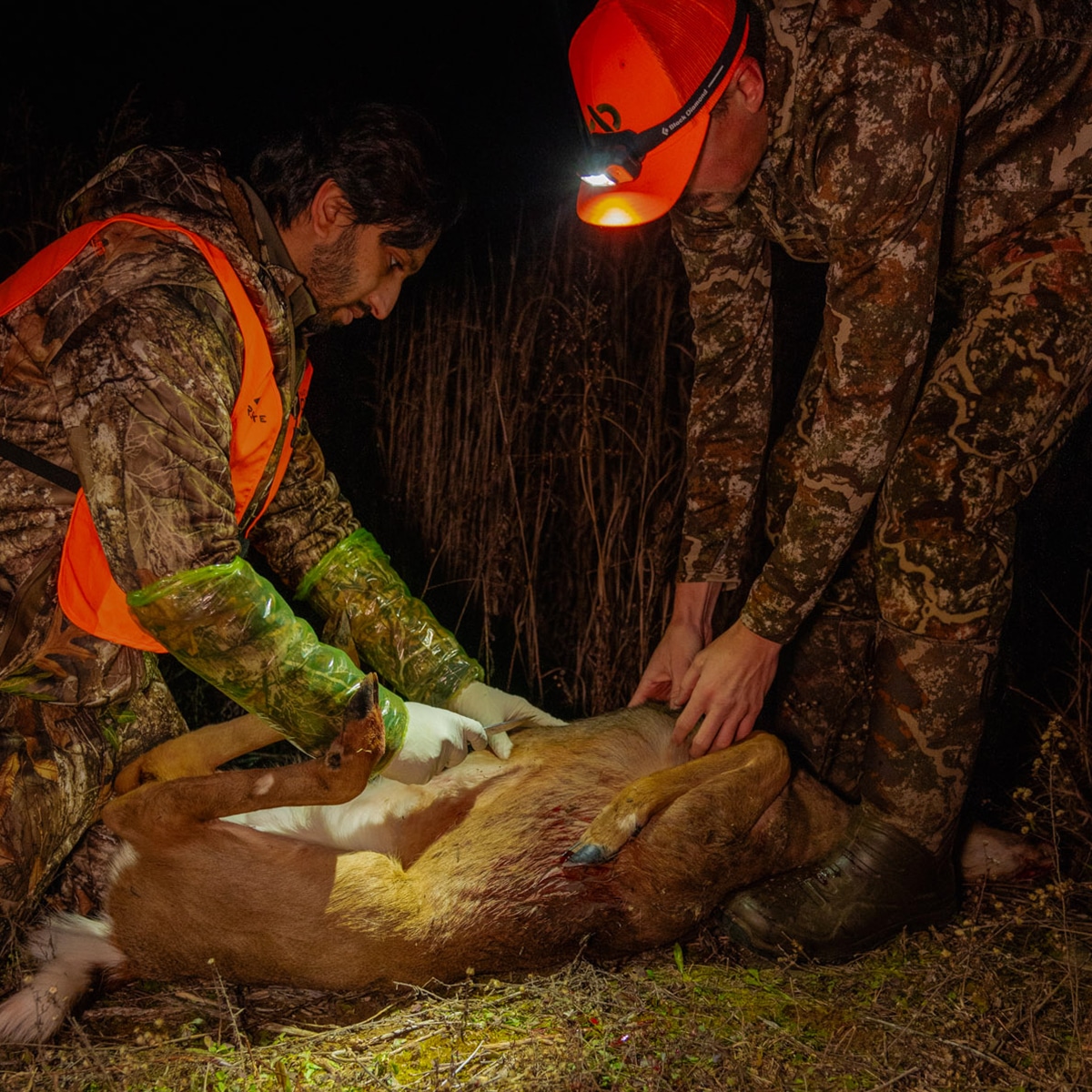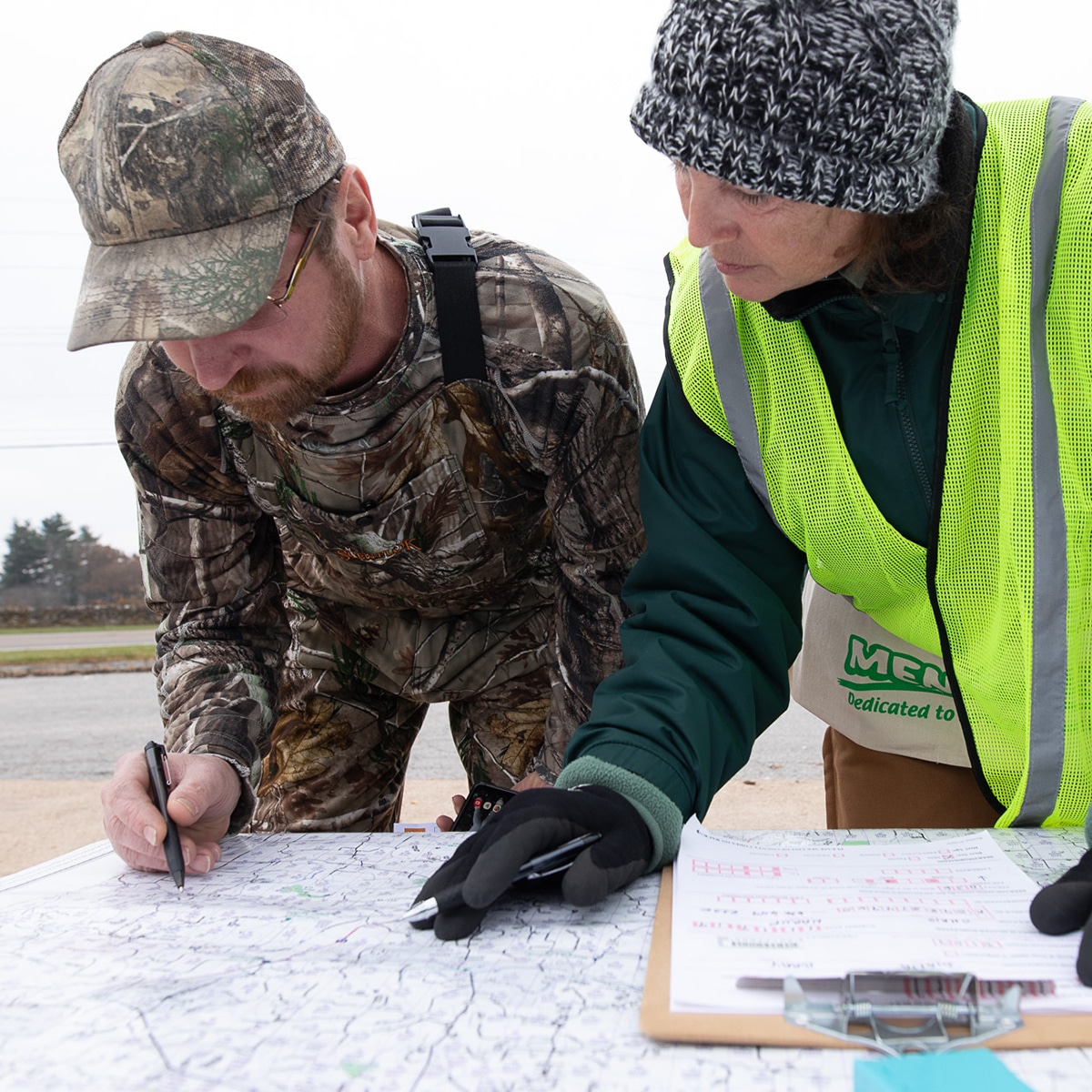
Though chronic wasting disease (CWD) continues to spread to new areas of the whitetail’s range, most deer in North America remain unaffected for now. Here are six very simple steps you can take as a deer hunter to help keep CWD out of your area or to discover its arrival as early as possible, making it manageable.
1. Travel With Low-Risk Deer Parts
Don’t pick up hitch-hiking CWD prions on your trip to hunt out of state. Infective CWD prions are extremely durable in the environment and remain infective for years in soil. If they catch a ride home with you, they could potentially introduce the disease to deer in your home state.
CWD prions concentrate in a deer’s nervous system: brain, eyes, spinal cord, spleen and other internal organs. Dispose of all these parts according to the rules in the state you’re hunting. Return home only with boneless venison. If you bring home a skull, antlers or jawbone, ensure they are completely free of any brain matter or other tissue. If you don’t know whether you’ll be hunting in a CWD zone or not, check our CWD layer in the onX Hunt app for information about your hunting location (If you don’t subscribe to onX Hunt, use discount code NDA when you sign up).
This is more than just a suggestion. It’s the law. Most whitetail states banned the importation of deer carcasses and high-risk parts. The threat to our deer resource is serious enough that wildlife law enforcement agencies in several states are investigating and pressing charges for violations.
2. Oppose the Movement of Live Deer
CWD continues to travel across long distances inside infected, live whitetails riding in livestock trailers, such as it has in Texas. If the transportation of live, captive deer is still allowed in your state, oppose it at every opportunity. If it’s illegal, and you learn someone is transporting captive deer anyway in violation of the law, report them immediately. Because there is no reliable CWD test for live deer, stopping the long-distance transportation of live deer and elk is the best tool we have for slowing the spread of CWD.
3. Maintain Healthy Deer Density Through Doe Harvest
Deer populations that are in balance with available nutrition are better able to resist all diseases and parasites. Though healthy deer can still become infected with CWD, the disease spreads faster in overpopulated herds. By maintaining a healthy deer density through adequate doe harvest where you hunt, you help keep deer herds from becoming overabundant and spreading disease faster. This makes it difficult for CWD to gain a rapid foothold and spread should the disease be introduced to your area. Not to mention all the other regular benefits of a healthy deer population!

4. Answer the Call for Voluntary Testing Opportunities
In the unfortunate event that CWD is introduced to your area, discovering it early is critical. In early stages, with few deer infected, management efforts have a chance to keep infection rates low and maintain healthy deer populations despite the presence of CWD – as is happening in Missouri and other states. This is why surveillance testing is important. If you are offered the opportunity to submit your harvested deer for routine CWD surveillance, answer the call.
5. Report Every Sick Deer to Your State Wildlife Agency
This is like assisting with routine disease surveillance. If they can respond in a given circumstance, state wildlife agencies will collect samples from sick deer for CWD testing. By being the eyes and ears of your state’s wildlife biologists, you may just help them find CWD early. Many types of diseases and injuries can cause deer to look or behave sick. Report all of them anyway. Once CWD gains a foothold and infects a high percentage of deer, there’s no known method for turning back the clock. Early detection is essential!
Remember, however, that most deer with CWD do not look sick. CWD incubates for one to two years before outward signs of disease appear. This is why surveillance testing remains important.

6. Back Your Wildlife Management Professionals
In the fight against CWD, deer hunters and wildlife professionals are allies, so stay connected to your state wildlife agency. They are the trained wildlife biologists who are charged with managing wildlife for the public, and most of them are die-hard deer hunters just like you. Listen and learn from them, provide your feedback and opinions at every opportunity, and assist in the fight when called upon. To engage with your wildlife professionals, sign up for their e-mail newsletters, attend public hearings and informational meetings, follow the agency on social media, and get to know your local biologists and game wardens by name.
The task of our side in this fight is to slow the spread of CWD to new areas and hold infection rates low in existing disease areas. This buys time for scientists and researchers who are working on finding solutions even as you read this. With deer hunters joining deer biologists and researchers, we will eventually find a way to protect North America’s most important and beloved game species.
You may also like
-
CWD INFORMATION LISTED BELOW CHRONIC WASTING DISEASE (CWD)
-
CWD INFORMATION FOR MANITOWOC COUNTY 2025
-
DNR Publishes Primary Results Of Southwest Wisconsin CWD, Deer And Predator Study
-
Wood duck & bluebird house project returns: Your latest Manitowoc outdoors report
-
DNR Confirms CWD In Wild Deer In Manitowoc County

